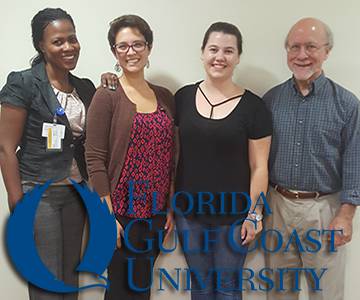
Music Therapy’s Unique Power to Promote Healing
Therapy for mental illness is about change in the best possible way. Now think about music and you’ll realize that music is rich with change. The notes of the melody change. Rhythms constantly change. Chords change.
Continual change is one of many commonalities between the psychiatric recovery process and music. These parallels make music therapy especially beneficial to David Lawrence Centers clients as they heal from mental health issues.
The Center’s new music therapy program is developed and implemented in partnership with the Music Therapy Department at Florida Gulf Coast University (FGCU), where I serve as Head of Music Therapy.
What is music therapy? Why is it so powerful for DLC clients, both teens and adults? Most basically, music therapists like myself design music activities that benefit people with disabilities. We look at the difficulties a person is having, and ask: How can we design a sequence of music activities that will benefit them?
Musical responses are widely distributed throughout our brain. The ability to play music originates in one area, singing in another, moving to music in yet another. Music is able to access healthy dimensions of the brain as a starting point for therapeutic change.
Consider the rhythmic aspects of music. Behavior can be organized around the beat, helping clients focus their attention from moment to moment. And music has form, with a beginning, middle and end: order. Such attributes of music help guide clients toward positive thinking strategies and emotional expression in an organized way, in direct contrast to expressions of disability.
Picture this: As a client gets the beat going by drumming or singing, it can refocus them from struggles they’re having. The piece can turn playful; it can be self-expression; it can reflect curiosity. As their piece progresses, the person is no longer identifying as someone with a disability. Instead: “I’m rewriting a song!” Or, “I’m jamming on drums!”
Because of music’s high degree of repetition, a client can keep repeating a drumming pattern. So now we have the reinforcing element of not just “This is who I am,” but “This is REALLY who I am!” When another player throws in a little change – a new rhythm or accent — clients learn to cope with the play of continuity and change that life presents. A client might drum a steady rhythm, another adds blues on the guitar, a third adds a lyric. Each is creating yet also collaborating – just like in real life. And there are many levels of participation. For a withdrawn teenager, we might simply say, “Hit that cymbal! Give the song a good ending!”
With adults at DLC, we focus on stress-reduction strategies through music. We teach them to move from a stressed to a highly-relaxed state by shifting from a fast-paced to a slower song. The take-away: You can slow yourself down.
I’m supervising FGSU music therapy practicum students in conducting sessions alongside DLC staff. So not only is the program helping clients, it’s helping prepare the next generation of music therapists. Making music brings people with mental health challenges into the world of normalization. “Let’s hit a beat. Let’s sing a song!” When they get into expressing themselves, they realize, “Wow, this feels normal. This feels good!” That reinforces their sense of their own potential for normalcy and health with strengths to take into their day.
Apr 28, 2017 | Mental Health, News, Uncategorized



